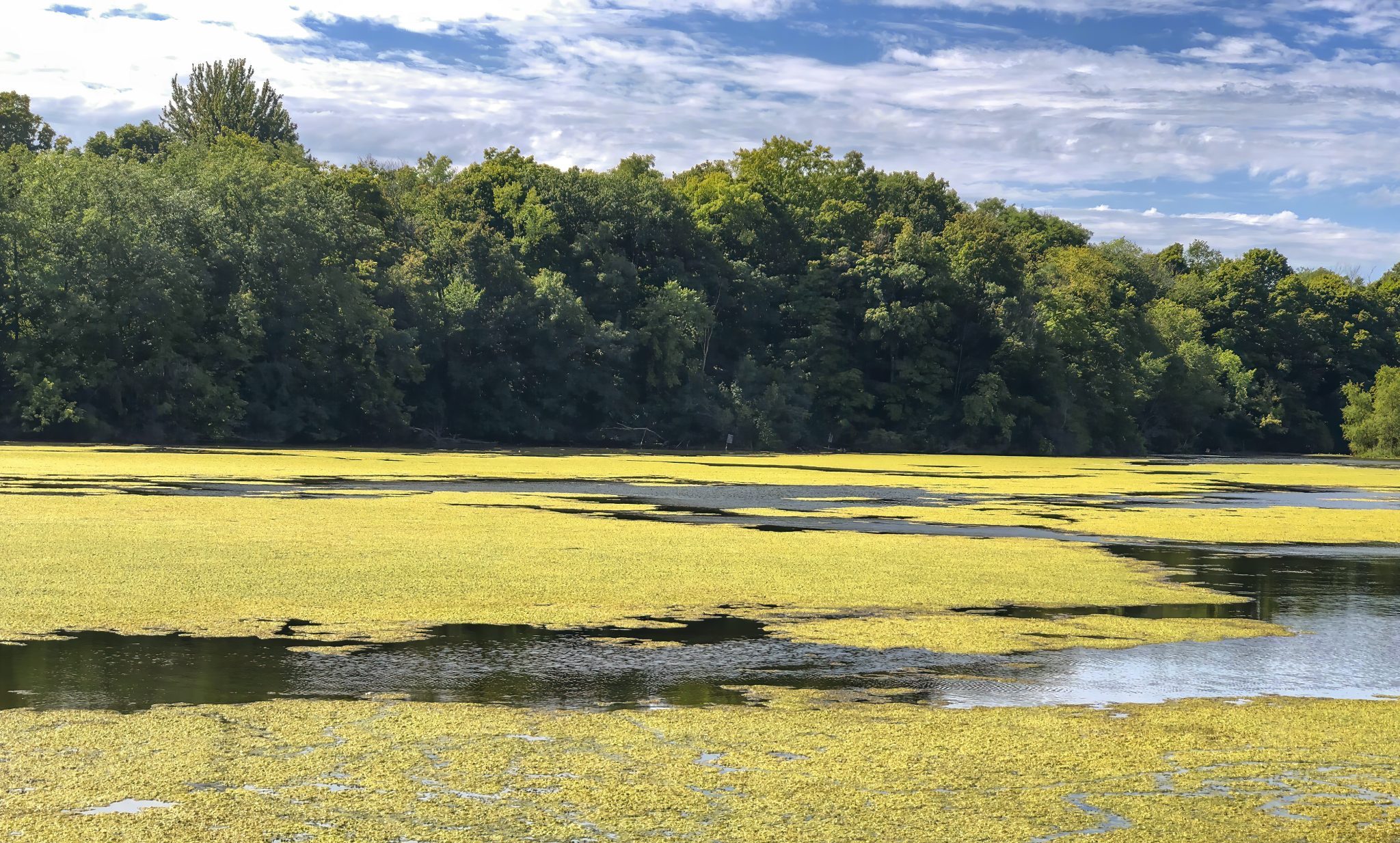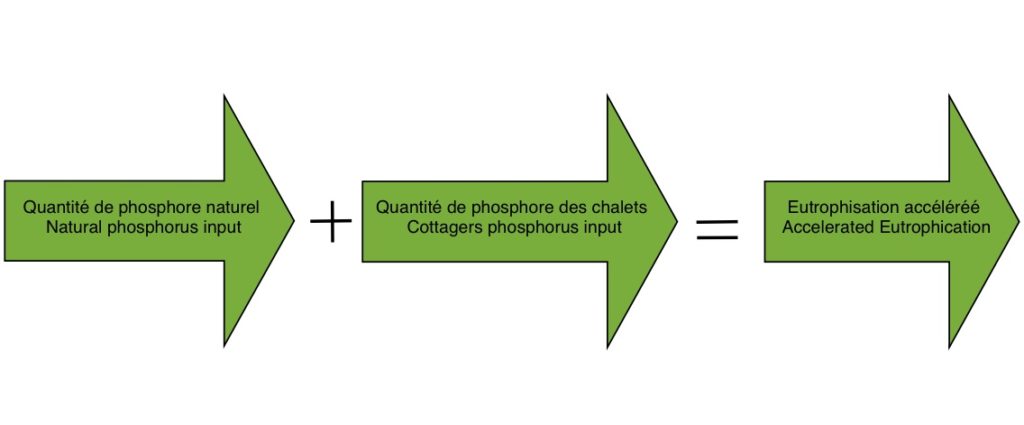
The equation is simple: More phosphorus equals more algae and weed growth.
The Eutrophication process
All lakes undergo eutrophication. It is a normal process, often referred to as the ‘aging of a lake’. Over the duration of tens of thousand of years, a crystal clear deep lake will eventually be transformed into a murky shallow bog.
The catalyst for the eutrophication process is phosphorus. The annual phosphorus input to the lake provides the necessary nutrients for aquatic plant growth. Each year, these aquatic plants reach the end of their annual life cycle and sink to the bottom of the lake where their decomposition depletes the water of oxygen. The phosphorus contained within this plant matter is stored in the sediment on the bottom of the lake.
The phosphorus continues to be stored in the sediment year after year until the lake enters into a ‘mid-life crisis’, so to speak. At this stage, the lake loses its ability to store the annual phosphorus input. This triggers the re-suspension of the stored phosphorus and when this is combined with the annual phosphorus input into the lake, the production of aquatic plant growth increases significantly.
The lake now enters into a transition phase – from ‘mid-life’ to ‘old age’. The plant matter continues to accumulate on the bottom and oxygen depletion extends, such that the lake now begins to resemble a swamp. Eventually, it will cease to exist and become land.
The euthrophication process occurs so slowly that we are unable to visibly detect the changes over the course of our lifetime.
The accelerated eutrophication process
In contrast to the natural aging process, the accelerated eutrophication of a lake occurs due to human activity which basically forces a lake into a state of ‘premature aging’ because of the excessive phosphorus inputs. This leads to:
– A noticeable decrease in the transparency of the water;
– Excessive weed growth and algae;
– A decrease in fish species that require high levels of oxygen (e.g., trout); and
– an increase in fish species (such as invasive species) that can survive in a low oxygen environment.
The role of cottagers in accelerating the eutrophication process
In most instances, the primary source of phosphorus that tips the scale in favour of accelerated eutrophication on most lakes are waterfront cottagers. Other sources, such as agricultural activity bordering on a lake, and industrial or commercial installations, can also be a major factor. But in their absence, waterfront cottages are the number one source of artificial phosphorus to lakes and, thus, the primary cause of accelerated eutrophication.
Each waterfront cottage is capable of inputting between approximately 535 and 3,345 grams of phosphorus to the lake environment per cottage season, sometimes more, depending on the following critical factors.
Using household products that contain phosphorus accelerates eutrophication
If your cottage (like most) has a typical septic tank and drainage field configuration, between 70% and 90% of all phosphorus entering your septic system will eventually end up in the lake! This traditional method of treating wastewater was primarily designed to prevent outbreaks of water borne diseases (such as cholera and typhoid). The septic tank system is not designed to be an effective method of removing phosphorous from wastewater. The drainage field eventually becomes saturated with phosphorus and looses its capacity to retain it. The phosphorus then works its way back into the lake.
Using yard products that contain phosphorus and removal of native trees and shrubs accelerates eutrophication
Commercially available fertilizer used to stimulate growth of lawns, vegetable and flower gardens contain a lot of phosphorus. After application, the fertilizer lies on the surface until the next rainfall. The surface run-off generated by the rain carries the phosphorus into the lake. The greater the size of the area that is being fertilized, and the slope of the terrain, the more phosphorus that is deposited into the lake. Compounding this problem is the removal of native shoreline vegetation. Small trees and shrubs slow down the speed of surface runoff after a rainfall and absorb some of the phosphorus that would otherwise make its way into the lake.
What you can do to help reduce phosphorus in the lake
Use phosphate-free household products.
Avoid commercially-available fertilizer on your lawn, flower and vegetable gardens. Instead, try composting your fruit, vegetable and yard waste. Compost is an excellent soil conditioner and releases its phosphorus slowly, whereas the phosphorus in commercially-available fertilizer is not retained by the soil and quickly washes into the lake after application.
Avoid clearing your property of trees and vegetation, especially near the shoreline. Consider replanting species native to the shoreline. This also helps to reduce erosion.
Make sure your septic system is up-to-date and well-maintained. Have your septic system pumped every 3 to 5 years to remove the build-up of solids and scum. If you are converting a cottage into a permanent dwelling be sure to check the capacity of your septic system.
Reduce your water use at the cottage. Excessive water use is the most common cause of septic failure. Cut down on the amount of water entering your septic system by installing low flow toilets and showerheads, and taking laundry home to wash.
(Photo: https://www.aces.edu/blog/topics/crop-production/understanding-soil-phosphorus-loss/)

